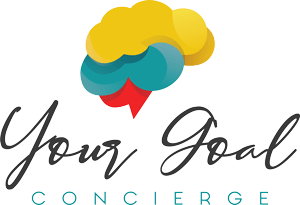By Erica Kesse
•
December 5, 2025
The Shift Every CEO Needs to Make For decades, leadership was defined by performance — numbers, market share, and speed. But in 2025, the most effective CEOs are no longer the loudest voices in the boardroom; they’re the ones who know how to pause. They’ve learned that mental health isn’t a personal issue; it’s a leadership strategy. The modern leader’s competitive advantage is no longer just intelligence or vision, but emotional steadiness. The Hidden Cost of “Always On” Leadership The traditional model of success rewards constant motion — long hours, instant decisions, and endless availability. But neuroscience shows that this style of leadership pushes the brain into what psychologists call “System 1 thinking” — reactive, fast, and emotionally charged. In the short term, it feels productive. In the long run, it leads to burnout, poor decision-making, and a toxic work culture that drains innovation. When CEOs don’t protect their mental health, it doesn’t just affect them personally — it ripples through the entire organization. Stress at the top multiplies downward. Emotional regulation and psychological safety start with the leader. Why Mental Health Is a Leadership Skill Mental health has become a core leadership competency — not a perk or an afterthought. Leaders who prioritize emotional stability lead teams that are calmer, more creative, and more loyal. Why? Because they model regulation instead of reactivity. Here’s what that looks like in action: Presence over panic. Instead of reacting to every crisis, emotionally intelligent CEOs know how to pause, assess, and respond with clarity. Non-judgment over blame. They create psychological safety by replacing “Why did this happen?” with “What can we learn from this?” Agency over control. They empower teams to take ownership, giving them space to think and grow instead of micromanaging. These traits are what therapists call “holding space.” In leadership, that means creating an environment where people feel safe to think, fail, and grow without fear. Holding Space: A CEO’s Superpower Holding space is more than a feel-good phrase. It’s a practice rooted in psychotherapy — the art of being fully present, calm, and non-judgmental, even in discomfort. Applied to business, it becomes a strategic leadership tool . When leaders learn to hold space — for themselves, their team, and the organization — they make better, more sustainable decisions. Here’s how: They stay grounded under pressure. This steadiness prevents emotional contagion, where team stress mirrors the CEO’s stress. They create trust. Teams perform better when they know their leader listens before reacting. They think systemically. By slowing down, leaders can identify patterns in culture and performance — not just symptoms. In short: mental health awareness translates into sharper strategic leadership. From Burnout to Boundaries The first step toward mentally healthy leadership isn’t more meditation apps — it’s boundaries. Boundaries are not walls; they’re structures that protect energy and focus. For CEOs, that can mean: Scheduling “no-meeting” time for deep thinking Logging off email after a certain hour Saying no to projects that don’t align with vision Healthy boundaries are acts of leadership , not weakness. They communicate to your team that rest, clarity, and focus are valued. Creating a Mentally Healthy Organization Leaders set the tone for how the entire organization treats well-being. If you talk about self-care but answer Slack messages at midnight, your team learns that rest isn’t really respected. Here’s what builds a culture of mental wellness that also fuels performance: Normalize reflection. Start team meetings with “What worked this week?” instead of “What went wrong?” Encourage honest dialogue. Invite feedback on how processes or workloads affect stress levels. Train managers in emotional intelligence. EQ can be developed — and it pays off in retention and innovation. When CEOs model calmness and care, they create psychologically safe organizations — and that’s what keeps good people.




